Neck support pillow purchasing advice: how to choose the right product
- What You Need to Know
- Neck support pillows are often made of point-elastic foam that moulds to the contour of the head.
- Suitable neck pillows reduce pain and tension by aligning the cervical vertebrae with the rest of the spine.
- Side sleepers need higher pillows than back sleepers because the distance between the head and the mattress is greater in the side position than in the back position.
- Viscoelastic foam or “memory foam” is activated by heat and changes shape slowly.
- Materials such as gel foam and latex adapt quickly to the head and to changes in position.
Restful sleep, pain-free awakening
Tension and the resulting pain in the neck and back are common these days. The causes are manifold, but often an unfavourable lying position is a contributing factor. In order to sleep in a body-appropriate position, a suitable mattress and pillow are essential. It supports the head and compensates for the difference in height to the mattress so that the cervical spine does not lie bent for several hours.
A misalignment leads to tension and pain. This in turn prevents restful sleep and can cause headaches. The aim is therefore to relieve the cervical vertebrae and bring the body into an ergonomic sleeping position. Neck support pillows aim to do just that.
Neck support pillows are orthopaedic pillows that are designed to relieve pain and tension in the neck thanks to their special shape and filling. Another name is cervical spine pillow, where “cervical” stands for cervical spine. They adapt to the contour of the head and neck so that the entire spine, including the cervical vertebrae, forms a straight line when sleeping. The head lies centrally on the pillow and the shoulder in front of it.
Who are neck pillows suitable for?
Neck support pillows are especially useful for those who already suffer from head and neck pain. They ensure that the neck muscles lie anatomically correct while sleeping, which prevents cramps and tension. They are also often a consequence of incorrect lying: they are most likely to be avoided if the mattress and pillow provide optimal support. In addition, long-lasting neck pain sometimes extends to the shoulders, arms and back. After a herniated disc, a body-appropriate sleeping position is especially important to reduce the pressure on the injured area.
However, neck pillows are not a miracle cure. If you suffer from pain mainly due to sitting in an office for a long time, a neck pillow will not cure you. It does, however, prevent the pain from getting worse from another side and supports regeneration during sleep. Classic neck support pillows work best when you are lying on your side or back.

Common forms of neck support pillows
The best-known type of neck support pillow is probably the wave-shaped version. Such pillows have an elevation at the top and bottom to support the neck of the sleeper. The head is placed in the hollow between the elevations. If they are of different sizes, the lower elevation is usually designed for back sleepers and the higher elevation for side sleepers.
In fact, the low wave is excellent for side sleepers with narrow shoulders who would lie too high on the other elevation. For those who have not yet found their optimal pillow height, a pillow with an uneven wave is practical. This shape is also useful for sleepers who alternate between side and back positions. For those who sleep predominantly in one of the two positions, an even wave is sometimes the better choice, as the entire pillow is then available to them.
In addition to the wave-shaped products, there are also completely flat neck support pillows. Although they do not explicitly support the cervical vertebrae, the material still adapts to the shape of the head. However, because the materials used only yield slowly, the pillows can feel uncomfortable in the meantime.
There are also flat pillows with shoulder recesses and butterfly pillows with recesses on each side. The side hollows offer space for the arms on the one hand and facilitate breathing on the other. Sleepers can comfortably hold on to the butterfly wings.
The butterfly shape is particularly suitable for so-called side-tilt sleepers: they sleep half on their side and half on their stomach, so that a large part of the body weight rests on the upper arm. In this position, the face is tilted towards the pillow; thanks to the recess, sleepers can breathe better than on a rectangular pillow. Flat butterfly pillows are sometimes an option for stomach sleepers, but this depends on the height needed. There are also some special shapes, such as pillows with a head-shaped hollow. Some of them have a hole for the ear in the side position.
The dimensions of neck pillows
Neck support pillows are usually smaller than common pillows, which have a size of 80 x 80 centimetres and a square shape. Since the shoulder should not rest on the neck pillow, the width is always greater than the length. Common sizes are 40 x 80 centimetres, 30 x 60 centimetres and 30 x 50 centimetres. There are also various intermediate sizes such as 41 x 76 or 37 x 51 centimetres.
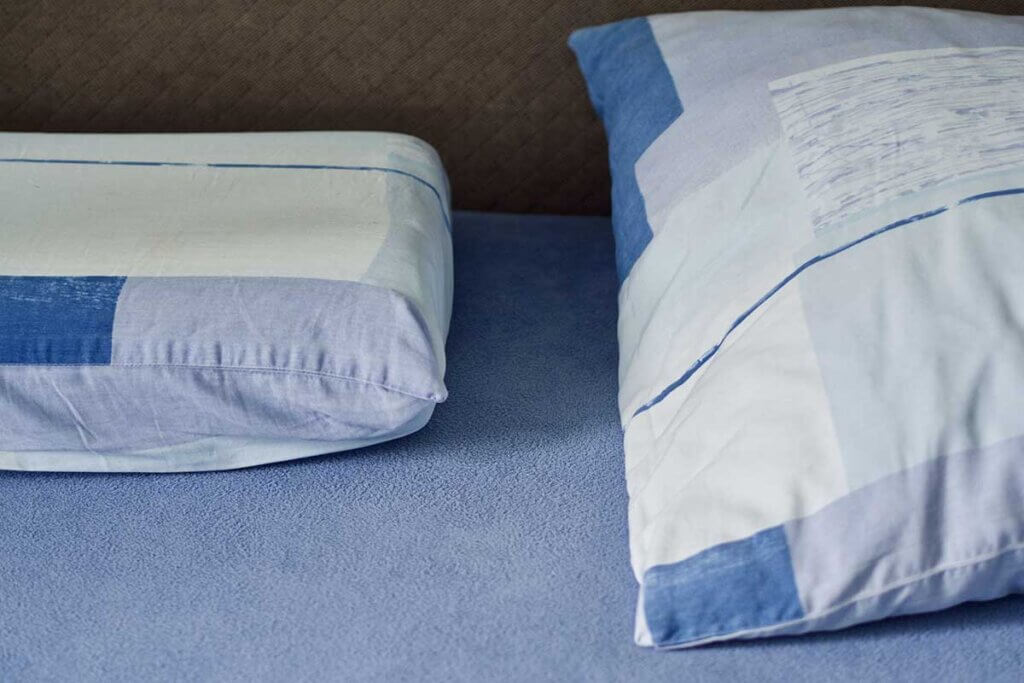
Small support pillows are no worse than their larger counterparts in terms of performance and comfort. The appropriate length and width are ultimately a matter of preference. To keep the head and shoulders in position in the hollow and prevent them from sinking too deeply, a width that roughly corresponds to the width of one’s back is sufficient for restful sleepers. This provides sufficient space on both sides of the headrest. Petite people, for example, can sleep excellently on a 32 x 49 centimetre pillow, while broad-shouldered people tend to prefer the larger models. Restless sleepers are also better served with a wider pillow, as they often change position during the night.
However, the decisive factor for an ergonomically correct position of the head and neck vertebrae is not the length and width of the pillow, but the height.
Finding the right height
The right height of a neck support pillow depends on the physique of the user on the one hand and on the sleeping position on the other. If the spine is in a straight position, you are lying down in a way that is correct for your body. A pillow that is too low causes the neck vertebrae to bend downwards, while a pillow that is too high causes them to bend upwards. Both cause pain in the long run.
Side sleepers need higher pillows than back or stomach sleepers. An appropriately high pillow reduces the pressure on the shoulders and guarantees a natural, gentle posture. Since only the head should rest on the pillow to prevent the spine from twisting, the shoulder width is a useful indicator of the ideal pillow height. A simple measuring method is to stand with one side of the shoulder against a wall and measure the distance between the wall and the centre of the head. The result corresponds approximately to the necessary pillow height.
The wall is also a practical aid for back sleepers in determining the right height: position yourself with your shoulder blades against a wall and keep your head straight and relaxed. The distance between the wall and the back of your head is your support requirement. According to Stiftung Warentest, a distance of 2.5 centimetres indicates a low support requirement. The need for support increases with increasing distance. The aim of the neck support pillow is to fill the gap between the neck and the pillow and to raise the head slightly.
Most neck support pillows are not suitable for stomach sleepers. To prevent them from overstretching their neck and bending their spine towards a hollow back, they need a particularly flat pillow. For many, it is even pleasant to sleep without a pillow.
Most neck support pillows are between 6 and 15 centimetres high, with wave-shaped models often having a higher side for side sleepers and a lower side for back sleepers. Some pillows can also be adjusted: There are several foam sheets inside that can be adjusted as needed.
Material and features
Most neck support pillows have a firm foam core inside. Some versions have a loose filling material instead. Which filling is most suitable depends on the individual lying sensation as well as the support needed. You lie softer on loose fillings, while firm foam fillings have a high support effect.
Foam fillings
Visco foam, gel foam and latex are the most commonly used filling materials for neck support pillows. All materials have a supporting effect because they adapt to the shape of the head after a while. The next morning, the foam returns to its original shape. This property is called the memory effect. A pleasant side effect is that the materials do not lump and no pressure points are created. Visco and gel foam as well as latex each have different recovery behaviour.
Visco foam, also known as memory foam, is thermoelastic. This means that its adaptability is activated by heat. For neck support pillows, body heat is crucial, but room temperature also affects the foam’s adaptability. If the room temperature is less than 18 degrees Celsius, it takes a very long time before the head is optimally supported. In addition, viscoelastic foam has only a low restoring force. For this reason, visco pillows adapt only slowly to a change in position. This can be unpleasant for those who often turn around during sleep.
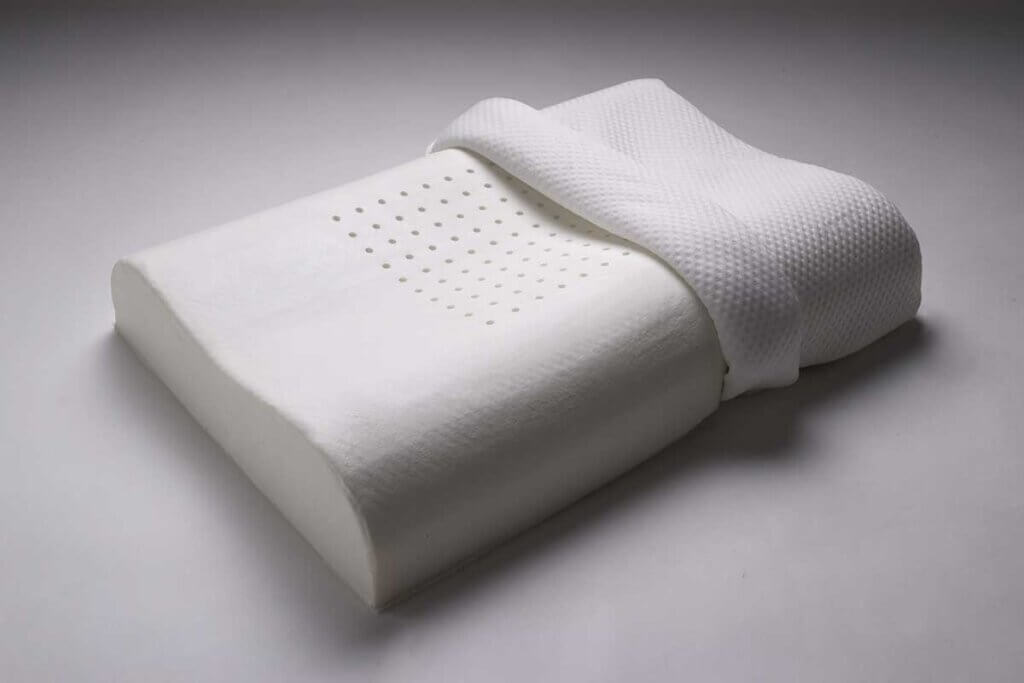
Gel foam is not pure gel, but cold foam mixed with a small amount of highly concentrated gel. The result not only feels like gel, but is just as adaptable. Gel foam pillows nestle excellently against the head and neck. The lying feeling is rather soft, so the material can be an alternative for those who find Visco foam too firm. Gel foam also does not need body heat to adapt. It quickly returns to its original position and quickly adjusts to changing lying positions. This makes the material ideal for restless sleepers.
Latex pillows are neck support pillows made of foamed natural or synthetic latex. Neck pillows made of natural latex are softer and more adaptable than those made of synthetic latex. The recovery behaviour is similar to that of gel foam pillows: Both change their shape quickly and independently of temperature.
Loose fillings
Apart from latex pillows, which, like gel and Visco models, are made of foam sheets, there are also neck support pillows that are filled with natural latex flakes. These are, for example, balls of virgin sheep’s wool or down. Down pillows offer a soft and cosy lying feeling as well as a light support effect. They are suitable for sleepers with mild cervical and back problems as well as for narrow-shouldered people. Natural materials such as kapok or various grains such as wheat and spelt are also used. Some manufacturers mix loose materials: for example, they use virgin sheep’s wool for the cervical vertebrae and rubber flakes for the head.
Cover
In addition to the pillow filling, the materials and properties of the pillow cover are also important. Breathable natural fabrics such as cotton and viscose are recommended, but fabrics with polyester content can also be used. The covers are ideally removable and can be cleaned in the washing machine. It is practical if they are also suitable for the dryer, but this is not a mandatory purchase criterion. Instead, look for mite protection as well as hypoallergenic properties. In addition, it is advantageous if the cover is antibacterial.
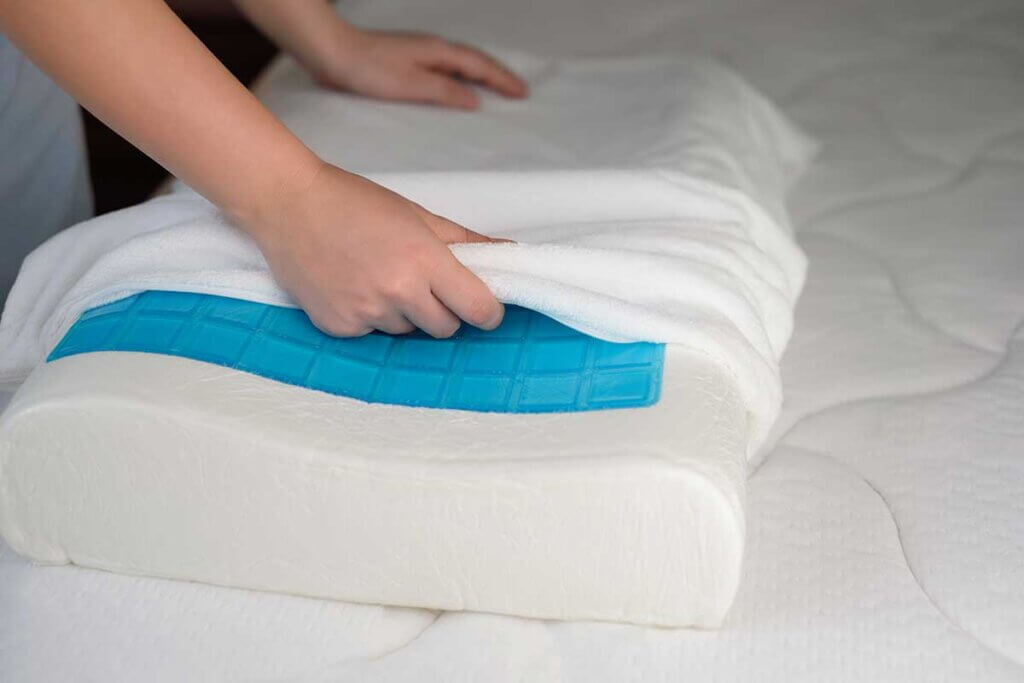
Depending on your chosen pillow shape, it may be difficult to find replacement covers. While standard covers will fit regular pillows, there is a limited choice for neck support pillows in special shapes as well as different cut-outs. It is best to make sure that the supplier also sells matching covers.

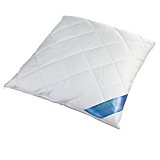
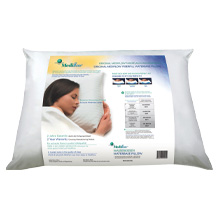
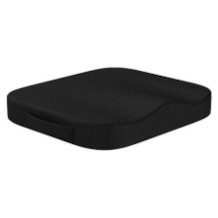
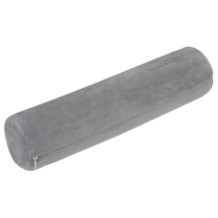
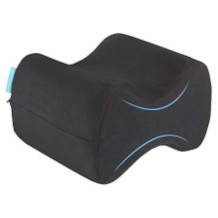
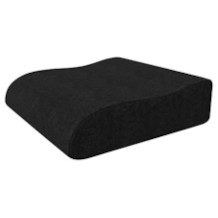
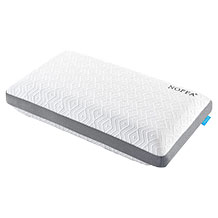
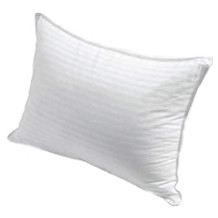
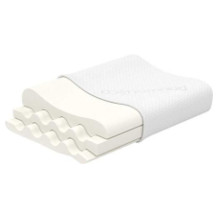


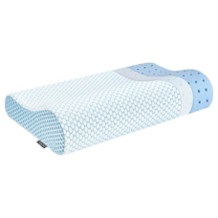




 18,638 reviews
18,638 reviews
